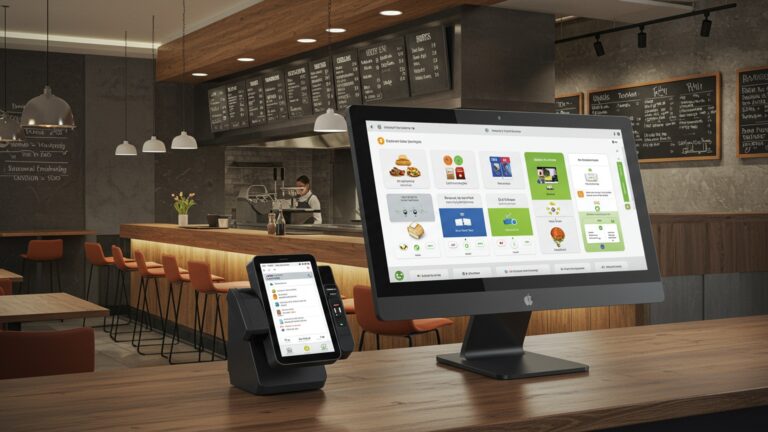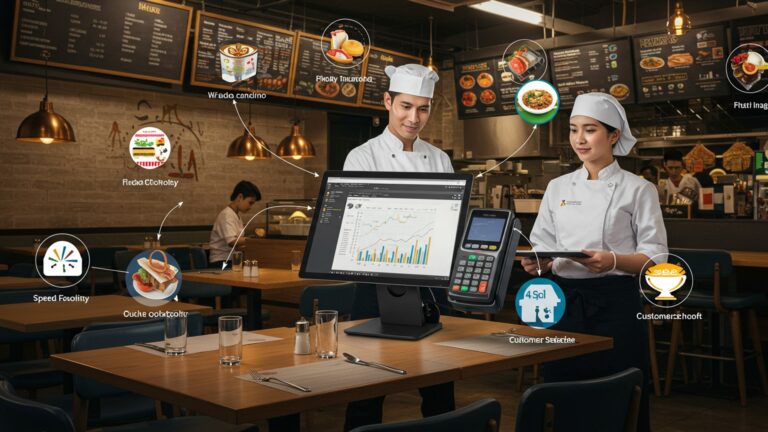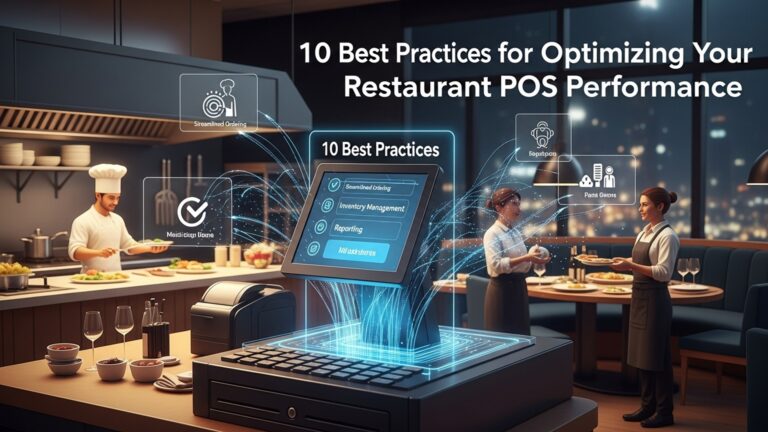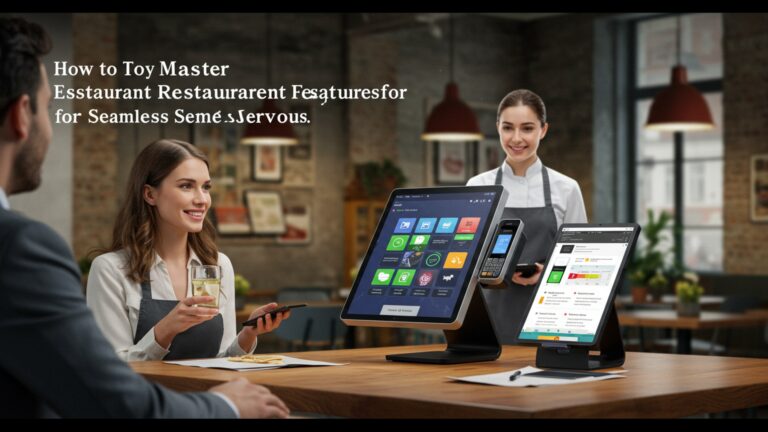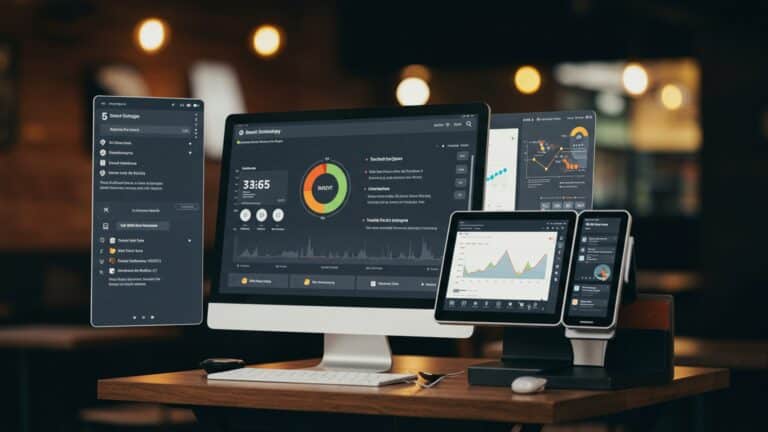Discover 7 Essential Android POS Features for Indian Restaurants
Indian restaurants, from bustling dhabas to fine-dining establishments, face unique operational complexities, demanding efficient solutions to manage intricate menus, high table turnover. diverse customer preferences. A robust Android POS for restaurants India is no longer just a billing tool; it’s a strategic asset for navigating this dynamic landscape. Modern systems leverage cloud technology to streamline everything from precise KOT management for a packed weekend service to effortless split-bill handling for large family groups and seamless integration with popular delivery aggregators. This digital transformation empowers owners to boost efficiency, reduce errors. elevate the overall dining experience in a competitive market.
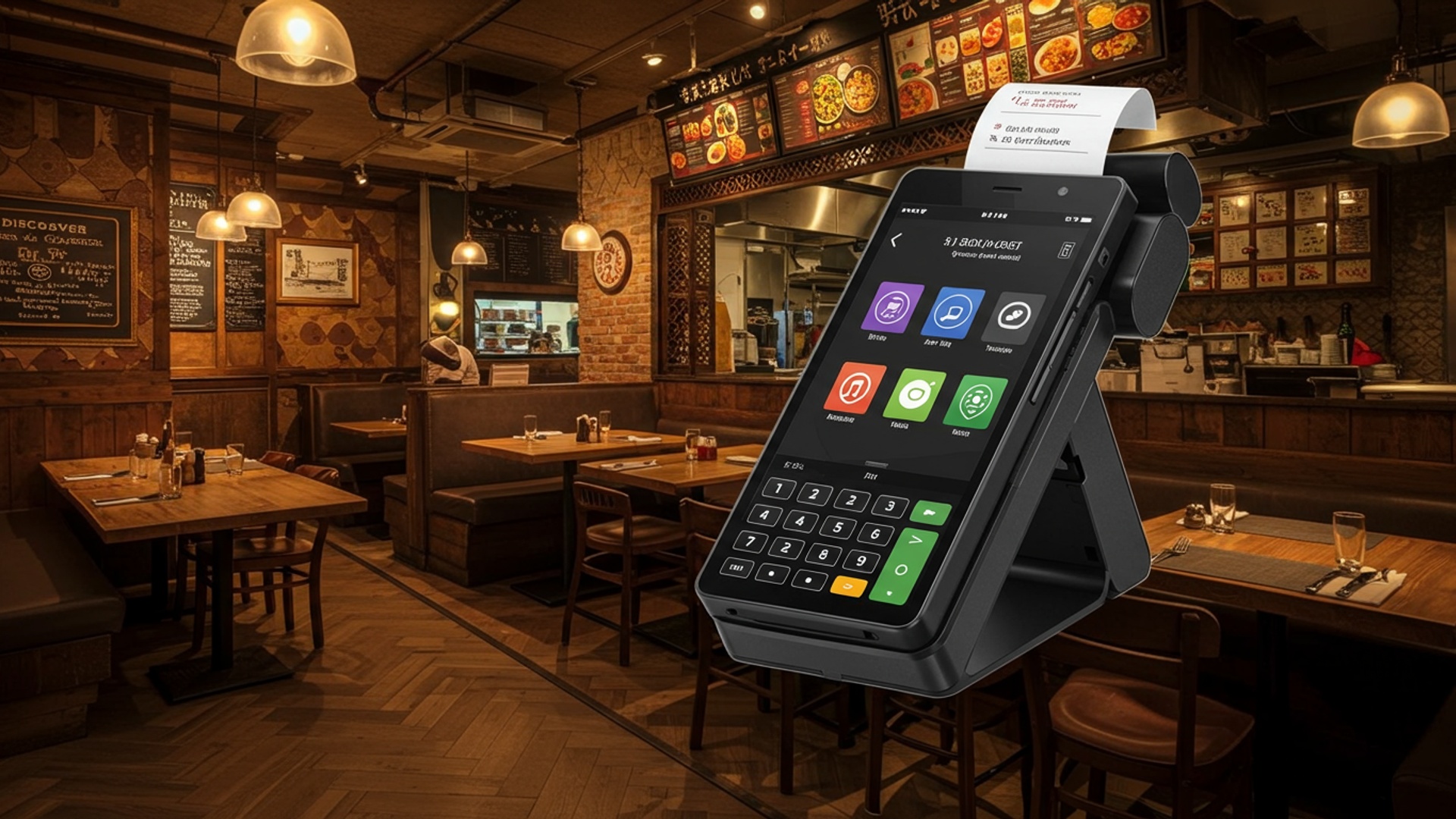
1. Seamless Order Management and Kitchen Order Ticket (KOT) System
For any bustling Indian restaurant, taking orders accurately and ensuring they reach the kitchen without a hitch is paramount. An Android POS system streamlines this entire process, moving beyond traditional pen-and-paper methods that are prone to errors and delays. This feature is the backbone of efficient service.
What it entails:
- Digital Order Taking: Servers can take orders directly on an Android tablet or smartphone at the table. This drastically reduces order entry errors and speeds up the process. Imagine a customer asking for “Butter Chicken, less spicy, extra gravy” – the system allows for detailed modifiers to be added easily.
- Instant KOT Generation: Once an order is confirmed, the system instantly sends a Kitchen Order Ticket (KOT) to the relevant kitchen station (e. g. , tandoor, curry section, beverage counter). This ensures that chefs start preparing dishes immediately, minimizing wait times for customers.
- Order Modifications & Splitting: Indian dining often involves sharing dishes or last-minute changes. A robust Android POS allows for easy modification of orders, adding items, or even splitting orders between different tables or customers, all without confusion.
- Course Management: Many Indian meals are served in courses. The POS can manage and fire dishes to the kitchen based on course progression, ensuring that starters arrive before the main course and desserts follow after.
Real-world application:
Consider a popular South Indian restaurant during peak lunch hours. A server takes an order for dosa, idli. filter coffee on their Android device. The KOT for dosa and idli goes to the main kitchen, while the coffee order is routed to the beverage counter. This simultaneous preparation, managed by the Android POS for restaurants India, significantly cuts down on service time and keeps customers happy.
2. Efficient Table Management and Reservations
Indian restaurants, whether fine dining or casual eateries, often deal with varying table sizes, reservation requests. walk-ins. A sophisticated Android POS for restaurants India offers intuitive tools to manage your seating arrangements and customer flow, ensuring optimal capacity utilization and a smooth dining experience.
Key functionalities:
- Interactive Floor Plan: Visual representation of your restaurant’s layout on the POS screen. Servers and hosts can see which tables are occupied, available, or reserved at a glance. This helps in efficient seating and prevents double-booking.
- Table Status Tracking: Instantly know if a table is seated, waiting for food, eating, or needs to be cleaned. This data is crucial for managing the dining pace and turning tables faster.
- Reservation System Integration: Many modern Android POS systems integrate with online reservation platforms. This allows customers to book tables beforehand. the restaurant staff can manage these bookings directly from the POS, assigning tables and sending confirmations.
- Waitlist Management: During busy periods, a digital waitlist helps manage queues effectively. Customers can be added to the list, receive estimated wait times. get notifications when their table is ready, enhancing their overall experience.
Why it matters for Indian restaurants:
Imagine a large family dinner at a North Indian restaurant. They’ve reserved a specific large table. The POS system not only confirms their reservation but also helps the staff prepare the table in advance, assign a dedicated server. manage their order efficiently once they arrive. This personalized touch, facilitated by the table management feature of an Android POS, is vital for customer satisfaction and repeat business.
3. Flexible Billing and Diverse Payment Integration
In today’s digital economy, offering multiple payment options is non-negotiable, especially in India where digital payments like UPI have become ubiquitous. An Android POS for restaurants India must support a wide array of billing scenarios and integrate seamlessly with various payment gateways.
Core features include:
- Split Billing Options: Indian dining often involves groups who wish to pay separately. The POS can easily split bills by item, by equal share, or by custom amounts, avoiding manual calculations and potential disputes.
- GST Compliance: Automatic calculation and application of Goods and Services Tax (GST) as per Indian regulations. This ensures accurate billing and simplifies tax reporting, a critical requirement for any business in India.
- Multiple Payment Methods: Support for cash, credit/debit cards (via integrated card readers), UPI (Unified Payments Interface), mobile wallets (Paytm, Google Pay, PhonePe). even loyalty points redemption.
- Discounts and Promotions: Apply various discounts (e. g. , percentage off, item-specific, happy hour) and manage promotional offers directly through the system.
- Digital Receipts: Offer customers the option to receive receipts via SMS or email, reducing paper waste and enhancing convenience.
Example of a smooth transaction:
A group finishes their meal at an Indian fast-casual restaurant. One person wants to pay with their credit card, another with UPI. a third with cash. The server, using the Android POS, quickly processes these different payments for the same bill, calculates the GST. provides digital receipts, all in a matter of seconds. This level of flexibility is what customers expect from an Android POS for restaurants India.
4. Robust Inventory Management
Managing inventory in an Indian restaurant is a complex task due to the sheer variety of ingredients – from numerous spices and fresh produce to different types of rice, lentils. dairy products. An Android POS system with strong inventory management capabilities can be a game-changer, helping to reduce waste, control costs. ensure consistent food quality.
Key aspects of effective inventory management:
- Real-time Stock Tracking: Monitor ingredient levels in real-time. Every time a dish is sold, the system automatically deducts the required ingredients from stock. This gives an accurate picture of what’s available.
- Recipe Management: Define precise recipes for each dish, specifying ingredient quantities. This helps in standardizing portion sizes and calculating the exact cost of each dish, which is vital for profitability.
- Vendor Management: Keep track of suppliers, purchase orders. delivery schedules. The system can alert you when stock levels are low for specific ingredients, prompting timely reorders.
- Waste Reduction: By knowing exactly what’s in stock and what’s moving, restaurants can minimize spoilage and waste, particularly for perishable items like vegetables and dairy.
- Cost Control: Accurate inventory data allows for better cost analysis per dish, helping restaurants price their menu items competitively while maintaining healthy profit margins.
Illustrative scenario:
A chef at an Indian restaurant notices that the system is showing low stock for fresh paneer. Instead of realizing this when an order comes in, the POS alerted them proactively based on predefined reorder levels. They can then place an order with their supplier immediately, ensuring there’s no disruption in serving popular dishes like Paneer Butter Masala. This proactive approach is a significant benefit of an Android POS for restaurants India.
// Example of how a recipe might be structured in a POS system for inventory deduction
{ "dish_name": "Chicken Tikka Masala", "ingredients": [ {"item": "Chicken Breast", "quantity_grams": 200}, {"item": "Yogurt", "quantity_ml": 50}, {"item": "Tandoori Masala", "quantity_grams": 10}, {"item": "Tomato Puree", "quantity_ml": 100}, {"item": "Cream", "quantity_ml": 30}, {"item": "Spices Mix (Garam Masala, etc.)" , "quantity_grams": 5} ]
}
5. Customer Relationship Management (CRM) and Loyalty Programs
In the competitive Indian restaurant landscape, building a loyal customer base is key to sustained success. An Android POS system can go beyond transactions, acting as a powerful CRM tool to grasp your customers better and reward their loyalty.
How it empowers customer engagement:
- Customer Database: Collect and store valuable customer details such as names, contact details, birth dates. order history. This data helps in personalizing interactions.
- Loyalty Programs: Implement points-based or tiered loyalty programs directly through the POS. Customers can earn points with every purchase and redeem them for discounts or free items. This encourages repeat visits.
- Personalized Marketing: Use customer data to send targeted promotions, birthday wishes, or special offers via SMS or email. For example, if a customer frequently orders vegetarian dishes, you can send them a promotion for a new vegetarian thali.
- Feedback Collection: Integrate options for customers to provide feedback directly through the POS or associated digital channels, allowing you to address concerns and improve service proactively.
Impact on an Indian restaurant:
Imagine a regular customer at your South Indian eatery. Each time they order their favourite filter coffee and vada, their loyalty points accumulate via the Android POS. On their tenth visit, the system notifies the server that they have enough points for a free coffee. This small gesture, enabled by the Android POS for restaurants India, makes the customer feel valued and significantly increases their likelihood of returning.
6. Comprehensive Reporting and Analytics
Running a successful restaurant is not just about serving great food; it’s also about smart business decisions. An Android POS system provides invaluable insights through detailed reports and analytics, helping owners interpret their operations better and identify areas for improvement and growth.
Critical reporting capabilities:
- Sales Reports: Detailed breakdown of sales by day, week, month, item, category. even by server. Identify peak hours, best-selling dishes. slow-moving items.
- Inventory Reports: Track ingredient consumption, stock levels. identify potential waste or theft. This ties directly into cost control.
- Staff Performance Reports: Monitor individual server performance, average order value. tips. This can help in training and incentivizing staff.
- Customer Insights: examine purchasing habits, popular dishes among loyal customers. the effectiveness of loyalty programs.
- Profit and Loss Statements: Some advanced systems can help generate basic P&L reports by integrating sales and inventory costs, providing a snapshot of financial health.
Actionable insights for restaurant owners:
A proprietor of an Indian restaurant chain reviews their weekly sales report from the Android POS. They notice that their “Special Biryani” is a top seller on weekends but only moderately popular on weekdays. Conversely, their “Thali meals” perform exceptionally well during weekday lunch hours. Armed with this data, they can adjust their marketing, staffing. ingredient procurement to optimize operations, potentially running a “Biryani Weekend Special” to boost sales further. This data-driven approach is a hallmark of a powerful Android POS for restaurants India.
7. Cloud-based Architecture and Multi-location Management
For Indian restaurants looking to expand or for owners managing multiple outlets, a cloud-based Android POS system is indispensable. It offers unparalleled flexibility, accessibility. scalability, moving beyond the limitations of traditional on-premise systems.
Benefits of a cloud-based Android POS:
- Remote Access: Owners can access sales data, reports. manage operations from anywhere, at any time, using just an internet connection. Whether you’re at home or on holiday, you’re always connected to your business.
- Real-time Data Sync: All data (orders, sales, inventory) is synced to the cloud in real-time. This means all your POS terminals, kitchen displays. back-office systems are always working with the most current data.
- Multi-location Management: For restaurants with multiple branches, a cloud-based system allows centralized management of menus, pricing, inventory. staff across all locations. You can compare performance between outlets effortlessly.
- Enhanced Data Security: Cloud providers typically offer robust security measures, regular backups. disaster recovery plans, protecting your critical business data more effectively than local storage.
- Automatic Updates: Software updates, new features. security patches are automatically rolled out by the provider, ensuring your system is always up-to-date without manual intervention.
Comparing Cloud vs. Traditional On-Premise POS:
| Feature | Cloud-based Android POS | Traditional On-Premise POS |
|---|---|---|
| Data Accessibility | Anywhere, anytime with internet access | Limited to the physical restaurant location |
| Setup Cost | Lower initial investment (subscription model) | Higher upfront cost (hardware, software license) |
| Maintenance & Updates | Managed by provider, automatic updates | Requires IT staff, manual updates |
| Scalability | Easy to add new locations/terminals | More complex and costly to scale |
| Data Security | High-level security and backups by provider | Depends on local IT infrastructure and practices |
| Multi-location Management | Centralized control and reporting | Difficult to integrate and manage separately |
For an entrepreneur running a successful chain of Indian restaurants across different cities, the cloud-based Android POS for restaurants India is an absolute necessity. They can monitor sales of their Mumbai branch from Delhi, update a menu item across all their outlets simultaneously. get consolidated reports, all from a single dashboard. This level of control and insight is transformative for business growth and efficiency.
Conclusion
Embracing the right Android POS features is no longer a luxury but a strategic imperative for Indian restaurants striving for excellence. We’ve explored how streamlined KOT management, precise inventory tracking, robust online ordering integration. seamless digital payment processing, including the omnipresent UPI, can fundamentally transform your daily operations. I’ve personally witnessed how a small biryani outlet in Hyderabad slashed its order errors by 30% simply by adopting a smart KOT system, directly impacting customer satisfaction and repeat business. My actionable tip for you is to prioritize a POS solution that truly understands the nuances of the Indian culinary scene – managing specific regional dishes, fluctuating ingredient costs. the rush of festive seasons. Don’t just look for features; seek a system that offers intuitive interfaces and reliable local support. This isn’t merely about faster billing; it’s about gaining invaluable insights into your business, enhancing customer loyalty through personalized experiences. ultimately, future-proofing your venture. Invest wisely. watch your restaurant flourish in India’s competitive gastronomic landscape. For deeper insights into selecting the right system, consider reading How to Choose the Best Restaurant Billing Software India.
More Articles
How to Choose the Best Restaurant POS System for Seamless Operations
How to Choose the Best Restaurant Billing Software India 8 Smart Guide
Discover 10 Best Online Ordering POS Systems for India Restaurants
How to Select the Best POS Software in India A Comprehensive Guide
Learn How to Master POS Billing Software for Faster Sales and Efficiency
FAQs
How does an Android POS system help with taking orders for Indian restaurants?
An Android POS simplifies order taking for dine-in, takeaway. delivery. Staff can quickly punch in orders, customize items (like ‘less spicy’ or ‘extra paneer’). assign them to tables or customers, speeding up service and reducing errors.
Is it easy to update my menu or prices on an Android POS?
Absolutely! A good Android POS lets you quickly add new dishes, change prices for daily specials, mark items as out of stock, or even create different menus for breakfast, lunch, or dinner, all from a user-friendly interface. No more reprinting physical menus!
What kind of payment options can I offer my customers using this POS?
Modern Android POS systems support a wide range of payment methods crucial for the Indian market, including cash, UPI (like Google Pay, PhonePe), debit/credit cards. digital wallets. They also make splitting bills or applying discounts straightforward.
How does the POS communicate orders to the kitchen so things don’t get mixed up?
It uses Kitchen Order Tickets (KOTs). Once an order is placed on the POS, it’s instantly sent to a printer in the kitchen or displayed on a Kitchen Display System (KDS). This ensures the kitchen gets clear, accurate instructions, reducing errors and speeding up food prep.
Can this system help me keep track of my ingredients and stock?
Yes, many Android POS systems include basic inventory management. You can track raw materials, get alerts when stock is low for popular items. even manage recipes to see how much of each ingredient is used per dish, helping reduce waste and control costs.
What kind of business insights or reports can I get from the POS?
You’ll get valuable reports on sales performance, popular dishes, busiest hours, staff performance. more. These insights help you make smarter decisions about staffing, menu planning. promotions to boost your restaurant’s profitability.
What happens if my internet connection drops during peak hours?
A good Android POS is designed with offline capabilities. It can continue to take orders, process payments (cash/UPI, though card payments might need connectivity). print KOTs even without internet. Data syncs automatically once the connection is restored, so your operations aren’t interrupted.

